Weeding Steps in a New-to-You School Library
(or a not so new but hasn’t had a good weed in awhile library)
Many would say not to weed until you’ve seen students using the collection. While I understand the basis of that advice, now taking over a 3rd library, there are a few things that I know can be done before students arrive for the benefit of them, the collection, and my ability to work with them & it. This isn’t a one and done thing. It’s not even the full need. But it’s a start. And whether you start big or small, micro-sections or whole sections, getting at least a bit started helps feel like you have things more ready to go for when the students arrive.
I have been feeling overwhelmed by everything related to starting my new job in a new school, so I went in earlier this week to start doing an initial weeding walk through so I could help address some of that feeling. As I was loading up this first cart, I realized how instinctive some of my weeding decisions have become. At the same time, I was thinking about all of the posts I’ve been seeing on social media in librarian groups about people hesitant or unsure about weeding. I love the results of weeding, so I figured sharing my steps & thought process could be beneficial to others needing to get started or just thinking about a new approach.
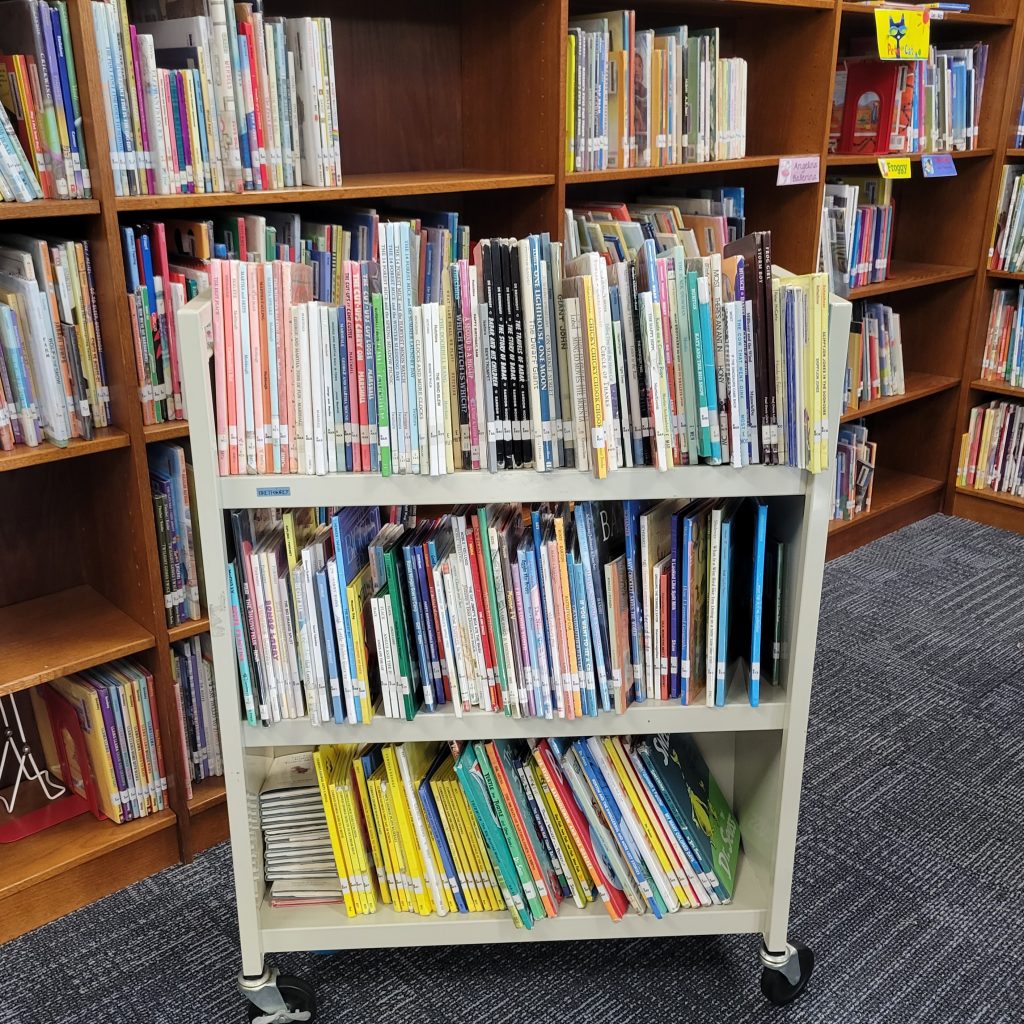
A Few Benefits of Weeding
- If you’re going into a library (like I have 3 times now) where all of the shelves are just full of spine out books, you’ll make space on your shelves to put series books in bins, put as many books as possible face out for ease of browsing, and do front-facing books to highlight recommendations or type of book in that section. Extra important in an elementary school library where some of the kids won’t even be able to read words yet!!
- You get to know your new collection well & quickly!
- Instant gratification! You can see the results of your labor immediately & the whole space will feel refreshed. Especially when your first pass is getting rid of the old & ratty books!
A Few Steps to Take (in whatever order works for you)
Get into that catalog & start running reports!
- I like to do a Shelf List for NF, FIC, & E separately so I can work with individual sections more easily.
- I export as an Excel spreadsheet & then import that to Google Sheets so I can access it from anywhere + it saves automatically.
- I set parameters to count circulations for the last 5 years (this time I did 6 years to account for the covid virtual year).
- I also set the date acquired up to 7/1/2019 this time. I wanted to know how circs looked prior to the covid years. And I don’t want my circ data skewed by books that were just added. (You can play with this to figure out your preference of setting this first or sorting on the spreadsheet later.)
- I then also did the same report setup but with the acquired date from 7/1/2019-8/1/2022. This way I could see what was purchased in the last 3 years.
- After they’re all in Sheets, then I set the conditional formatting to color code columns for me.
- 0, 1-2, 3 circs
- Year 1997 & earlier (25 years & older), 1997-2012 (10 – 24 years old), & 2012-2017 (5 years for many NF matters!)
- Again, you can play with any of these numbers to adjust for your comfort or situation. I didn’t want to over complicate it for this first one.
- Now sort your sheet based on the various parameters you want to look at. I wanted to know which books weren’t getting checked out. I also wanted to know where the oldest books were. I can also sort NF by call # to find specific sections (looking at you 398.2) where we often find aged or problematic books.
- Use this to pull from the shelves in a planned manner.
Do a shelf walk!
- Look for these things & pull them to a cart:
- Books you know are problematic (hello most Thanksgiving books!)
- Ratty spines (or spine labels – you can often tell the age by seeing a different font/type print on the spine labels!)
- Old looking art/lettering
- Yellowed page edges
- Faded covers
- Old looking covers
- Don’t forget to open up some of those books you think might be a weeding candidate!
- You might be able to tell it needs to go just by the smell when you open the cover! 🤢
- Check the copyright info.
- Look for stains or signs of mold or bugs inside the front & back covers.🤢 Especially if your library doesn’t have a/c!🥵 (That can’t be fixed – they need to go in the garbage.)
- Have a book cart (or ideally 2) next to you. Ones that definitely need to go on one cart – ideally divided by problematic vs gross & possibly need a reorder. Ones you’re questioning on another. Don’t worry at this point about pulling too many or not enough books! You can always go back.
- For the books you aren’t sure about, or are stained/ratty but might be worth having, scan them into your catalog to check circulation data on the Copy Status page. If they are high circ & still have value for your collection & meet your selection criteria, add to a replacement order list.
Use your collection analysis from your vendors!
- I like Follett Titlewave myself. All my libraries have used Destiny for their catalog, so I just go to the Catalog tab, choose Titlewave from the sidebar, and then click that lovely blue Submit button. (This is most accurate if a recent inventory has been done on your entire collection.)
- When I log into the Titlewave website, I click on My Account, then TitleWise Analyses from the drop down menu.
- Click into your most recent analysis.
- Make note of the average age of your collection (You can also set goals for yourself, & if you do, the font will be red meaning you have some work to do!)

- Scroll down past the pie charts and bar graph to find the “Aged titles”.
- You can click on the number below with how many titles make up that percentage to get a whole list.
- Print or export to Excel. Follow the same steps we did above.
- Look to the left for the chart with Collection by nonfiction classification. See that button that says Age-Sensitive Areas? Click it.
- For every section with aged titles, you can click on the red number and it will show you the titles. Go pull them so you can see them all!
- This is especially important because these nonfiction areas in the sciences can become outdated and/or inaccurate quickly. Some will be fine to keep, but this is where your expertise comes into play.
- You can click on the number below with how many titles make up that percentage to get a whole list.

A Few Notes
> Within all of this, a critical lens & understanding of the need for inclusive representation should be at the forefront of your mind. More authentic representation. More widely inclusive titles. More of kids seeing the realities of the global majority & celebrating those who have been marginalized or erased historically and haven’t had as many chances to see themselves as the heroes of the stories.
> Weeding is the quickest way to revitalize a collection without spending any money! Excitement & circulation go up when kids don’t have to sift through not so good to try to find the good.
> Parts of this plan assume you have a budget available to replace titles needing it & to add new, updated titles to fill in. But even if you don’t, there is still no need to keep gross, outdated, or problematic books circulating in your library.
> If you don’t already have it etched in your memory, search for the Crew Method & MUSTIE. This is the science behind library science & weeding (officially called deselection) and gives the basis of support in case you need to justify what & why you’re doing it. There is a definite art to this, but the science backs it up also. In my old school district, they used MUSTIE to give us specific guidelines to help us make our weeding decisions (screenshot below) which was especially helpful as a new librarian.
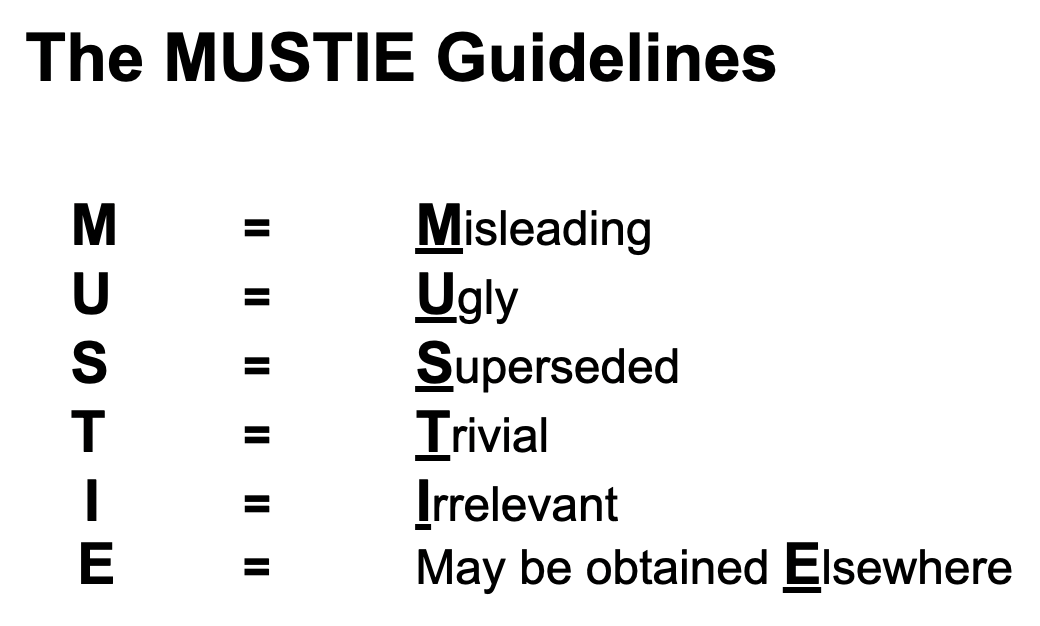
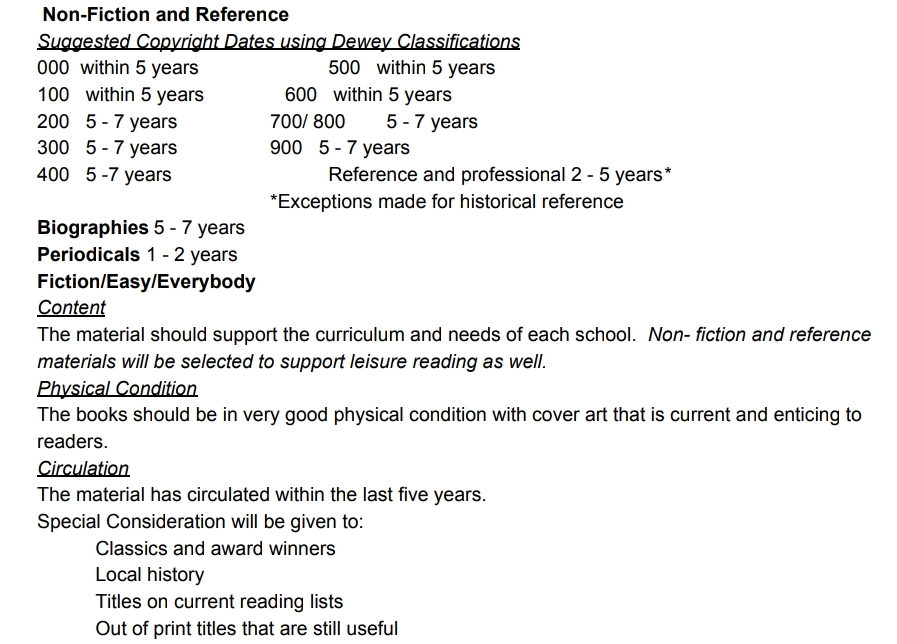
> Look at the average age of your collection. There is a high amount of satisfaction seeing that number get closer to now after weeding books. Plus, you see more excitement by the students at what they’re pulling off the shelves!
> If/when you are questioned, be sure you know your why, your how, & your plan. And definitely know your books per student number (use that TitleWise report!). I weeded 7500 books the first year in my 2nd library. But still had 22+ books per student – they could just find them all so much more easily!
The Bottom Line
School libraries are not museums or archives or dumps. We don’t have space or reason to keep all those old time Caldecott & Newbery winners just because they have a sticker! If they’re not being read or have problematic, outdated representation or just look unappealing and won’t connect with contemporary kids, let them go! It will liven up your space and make it more useable for everyone! Keep in mind Ranganathan’s Five Laws of Library Science:
- Books are for use.
- Every reader his book.
- Every book its reader.
- Save the time of the reader.
- A library is a growing organism.
OK, I weeded. Now what do I do with all these books?!
Recycle them or throw them out. Look at what we’re pulling here: problematic, inaccurate, outdated, falling apart, or gross. Those are not the quality of books I want to donate to kids, classrooms, or charities!! All kids, even those without funding for books, deserve high-quality beautiful books. That’s not what these are anymore. Get them out the door to make room for showcasing the good stuff you have on your shelves.
As Dr. Debbie Reese says, “Books aren’t sacred. Children’s hearts are.” We want those hearts to love books. We can’t privilege printed ink on paper over kids. We need to give them good ones and let the not good anymore ones go.




















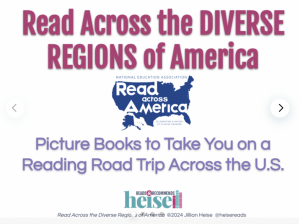
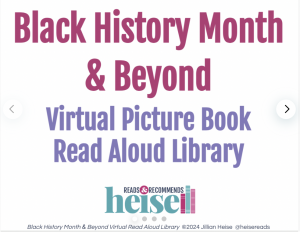
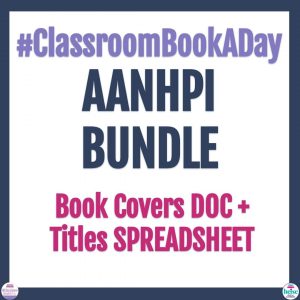
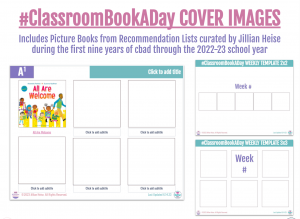

I love this! Thank you so much!
Thank you for this article. I love using destiny shelf list report for weeding. I am currently weeding the 398.2 in a k-2 school. What problematic
Stuff Should I keep An eye out for.
It is so fascinating for me to follow your library journey now that your library and my library are one in the same. I love this list so much! While I’m not a library media specialist, I know this post will be invaluable to everyone who is. As a classroom teacher, you have left me with so many nuggets of wisdom as I weed my way through my own library- thank you!
YES!! All of this! Thank you!